Brabazon Park
Houses within 15km of this house
Displaying 42 houses.
Houses within 15km of Brabazon Park
Displaying 42 houses.
| House name | Description | |
|---|---|---|
| Ashbrook | An early 18th century house, it was noted by Wilson as the seat of Mr. Moore in 1786. It was occupied by Michael Costello in 1814 and described as in a dilapidated state at the time of the first Ordnance Survey. The Irish Tourist Association file refers to a two-storey plain featured house with the ruins of a small private chapel closeby, which apparently fell into decay in the early 19th century. Some ruins remain at the site. | |
| Benada | The Jones had a house here in the eighteenth century as Wilson refers to Banada as the seat of Mr. Jones in 1786. It was held in fee by Rev. Daniel Jones at the time of Griffith's Valuation when it was valued at £17. In 1858 it was transferred to the Sisters of Charity who ran a girls' school and orphanage there. In the twentieth century it became a secondary school and continued in that role until 2004 when it was sold to a private developer. |

|
| Cloonbarry | At the time of Griffith's Valuation Cloonbarry was occupied by George Knox and was valued at £27.It was offered for sale in July 1866 by Roger Dodwell Robinson, when it was described as "an excellent dwelling house, erected by the owner's father at an expense of £2000". In 1906 Henry McCarrick was the owner of buildings at Cloonbarry, barony of Leyny, valued at £22. McTernan states that it had fallen into disrepair by the 1950s and was subsequently demolished. | |
| Tavraun House | A home of the O'Grady family in the 19th century, this house is still lived in and well maintained. In 1944 the Irish Tourist Association surveyor recorded Tavraun House as a plain, two-storey house, owned by Mr Walsh. Sir Henry Doran of the Congested Districts' Board lived in the house at the beginning of the 20th century. The family vault of the O'Gradys is in Urlaur Abbey. |
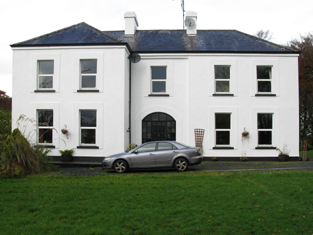
|
| Eden Park | Occupied by Joseph Brown at the time of Griffith's Valuation, when the property was valued at £3. Brown was leasing from Francis O'Malley. Mulloy writes that nothing remains of the house. | |
| Woodfield | At the time of Griffith's Valuation Francis R. O'Grady held the townland of Woodfield, which included an unoccupied house valued at £5. The house is labelled Woodfield House on both the 1st and 25-inch Ordnance Survey maps. Modern buildings exist at the site now though the ruins of some estate architecture is still visible. | |
| Carrowgowan | From at least 1814 the house was occupied by the Deanes who held it from Colonel McAlpine, who held from John Knox of Castlereagh. The house was described as in good repair, with offices, orchard and garden. Daniel H. Mellet occupied the house at the time of Griffith's Valuation. It is now demolished. | |
| Oldcastle | Built by the McJordans of Ballylahan in the late 18th century. Slater refers to it as the seat of John Bolingbroke in 1846. There are modern buildings at the site now. |

|
| Dove Hall | This house is labelled Dove Hall on the 1st edition Ordnance Survey map. A larger house, named Belgarrow House, is shown at the site on the 25-inch edition of the 1890s. It was occupied by Courtney Strogen and his descendants during the 19th century, held on lease from the Evans family. Occupied by John A. Knox in 1906. Belgarrow is now a ruin. | |
| Thornhill | Home of Charles Burke Jordan in the 19th century. At the time of Griffith's Valuation, he was leasing this property to James Jordan when it was valued at £5. The building labelled Thornhill on the 1st edition Ordnance Survey map is not the same as that on the later 25-inch edition published in the 1890s. The latter is no longer extant but some buildings remain at the original site. | |
| Listrisnan House | This house was described as in 'good repair' at the time of the first Ordnance Survey in the 1830s. At the time of Griffith's Valuation, Joseph Jordan was leasing buildings valued at £2 in the townland of Listrisnan from Myles Jordan. A building still remains at the site. | |
| Midfield House | Occupied by Anthony Kelly in 1814 and by P. Kelly in 1837. There is no house with a significant valuation in this townland at the time of Griffith's Valuation. Farm buildings appear to occupy the site now. | |
| Longfield House | Occupied by Colonel Kelly in 1814 and by Mrs Kelly in the 1830s. A house valued at £4 in this townland in the 1850s was occupied by Andrew Walsh. It is now a ruin. | |
| Barleyhill | In 1786 Wilson noted Barleyhill as the seat of Mr. McManus. Ruane dates the house from about 1748 with alterations in the 1770s and 1790s. He states that the house and 170 acres were occupied by George Harkin at the time of Griffith's Valuation, however the Valuation records Bernard McManus as the occupier of the house valued at £15. Quinn records that Bernard McManus had gone to live at Brownstown in 1856. The Aitken family have lived at Barleyhill for over a hundred years. |
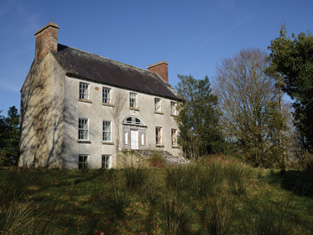
|
| Bellavary | Charles Goodwin lived in the house in the late 1830s. The Landed Estates' Court rental records that Bellavary House was leased to Standish O'Grady McDermott by William Malley on 10 Feb 1859 for 21 years. It later became a Royal Irish Constabulary barracks and burned down in 1920. | |
| Moorbrook | In 1786 Wilson refers to "Moore-field" as the seat of Mr. Moore. Leet's Directory records 'Moorfield' as an 'unoccupied seat' in 1814. The house appears, however, to have become known as Moorbrook as it is thus labelled on the Ordnance Survey maps. Henry Wills held Moorbrook at the time of the sale in 1854. At the time of Griffith's Valuation, it is described as a "herd's house" and occupied by Francis O'Grady. It is labelled as "in ruins" on the 25-inch Ordnance survey map of the 1890s. A modern house has been constructed near the site. | |
| Cloongee | Originally a Moore home which was sold by Harloe Phibbs Baker to the McDermotts who lived there until the 20th century. At the time of Griffith's Valuation it was held in fee by Owen McDermott and valued at £7. The National Inventory of Architectural Heritage notes Cloongee as a rare survivor of a late-seventeenth century house in county Mayo. It is still extant and occupied. |

|
| Faheens | An O'Donnell residence in the 1830s. No house with a substantial valuation exists in the townland by the time of Griffith's Valuation. | |
| Newcastle | Newcastle was the home of Andrew Clarke O'Malley, son of George O'Malley of Spencer Park. Following the death of Andrew's son, Owen Bingham Manners O'Malley, in 1886, Newcastle became the property of his sister, Elizabeth Brewster. Count Manus O'Donel, a Major General in the Austrian Service, lived at Newcastle in the late 18th century. In 1786 Wilson refers to it as the seat of General O'Donnell. Occupied by David Ruttledge in 1814 and by Jacob Beckett at the beginning of the 20th century. Only a portion of the original building is now extant. |

|
| Ballinamore | This house was the home of the Ormsby family in the 18th and 19th centuries. It was held in fee by Anthony Ormsby at the time of Griffith's Valuation, when it was valued at £40. In 1786 Wilson refers to it as " the beautiful seat of Thomas Ormsby". In 1938 the Ormsbys sold Ballinamore to a Scottish order of nuns, the Order of St John, who used the house as a school. The building was donated to Western Care in the 1970s. It now functions as a nursing home. |
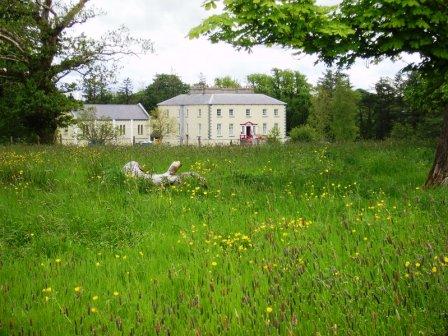
|
| Bunnacranagh House | Luke Colleran was leasing a property valued at £12 at Bunnacrannagh, barony of Leyny, from the Knox estate at the time of Griffith's Valuation. This house was built after the publication of the 1st edition Ordnance Survey map. It is labelled Bunnnacranagh House on the 25-inch edition of the 1890s. In the twentieth century part of this premises served as the post office for the village of Curry nearby. There is still an extant house at this site together with other remains of estate architecture. Part of the property was offered for sale in 2007. |

|
| Killedan | The seat of the Taaffe family and later the home of the McManuses, a well known medical family of whom Emily McManus, Matron of Guy's Hospital, London, was a member. |
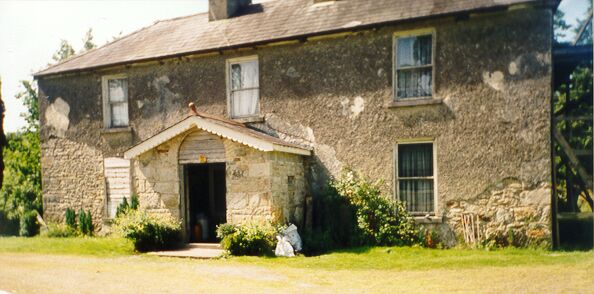
|
| Oxford | The home of members of the Joyce family in the late 18th and early 19th centuries, later held by the Tuohys in fee. In 1786 Wilson refers to it as the seat of "Mr. Joice". The house and over 740 acres held in fee by Martin Joyes were advertised for sale in the ''The Telegraph'' [Connaught Telegraph] of 13 July 1831. The original house is now a ruin. |
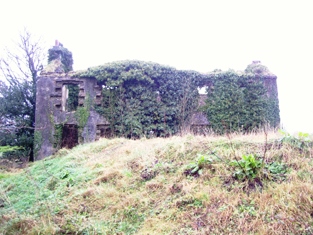
|
| Ballylahan | A property held by Pat McLaughlin from Sir William H Palmer in the early 19th century and by the Atkinsons at the time of Griffith's Valuation. Quinn writes that it was repossessed at the time of the expiration of their lease. It was a ruin by the publication of the 25-inch Ordnance Survey map of the 1890s. | |
| Carns Lodge | In 1906 Lord Harlech's estate was the owner of buildings valued at £18 at Carns, parish of Kilmacteige. . McTernan notes the house as Carns Lodge, which he says was built in the late 1850s as a gamekeeper's house. It is still extant and occupied. | |
| Creggagh | The house valued at £6 was held by John Fair at the time of Griffith's Valuation but was unoccupied. In 1894 Slater noted it as the seat of Major D.R. Fair. It was occupied in the early decades of the twentieth century but is now a ruin surrounded by forestry. |

|
| Liscottle | Home of the Horkan family in the second half of the 19th century. It was leased by George "Harkan" from Robert Ruttledge at the time of Griffith's Valuation when the house was valued at £2. It is labelled Liscottle House on the 25-inch Ordnance Survey map of the 1890s. Liscottle is no longer extant. | |
| Carrowbeg | Occupied by Patrick Sweeney in 1814 and by Richard O'Grady at the time of Griffith's Valuation. The house has been renovated and modernized and is still inhabited. |

|
| Carns (Kilmacteige) | At the time of Griffith's Valuation, Henry McCarrick was leasing a property valued at £14 in the village of Aclare (Carns townland), from the estate of William Evans. A shooting lodge is marked in this townland on the 25-inch Ordnance Survey map of the 1890s. | |
| Rathmagurry House | The 1st edition OS map indicates Rathmagurry House at Rathmagurry in Achonry Parish. At the time of Griffith's Valuation William Gawley was leasing a herd's house valued at £2 from the Knox estate at this location. The house is no longer extant. | |
| Coolaghy Lower | Reverend George Hanson was leasing this property from the Abercorn estate at the time of Griffiths Valuation in the 1850s, when it was valued at £12. A substantial farm exists at the site. | |
| Galdonagh Upper | Charles Watson was leasing this property from the Abercorn estate at the time of Griffiths Valuation in the 1850s, when it was valued at £12. A hose and farm buildings are still extant at the site. | |
| Tullyrap | Alexander Finlay was leasing this property from the Abercorn estate at the time of Griffiths Valuation in the 1850s, when it was valued at £25 and had an adjacent mill. A substantial farm still occupies the site. | |
| Foyle View | Alexander Porter was leasing this property from the Abercorn estate at the time of Griffiths Valuation in the 1850s, when it was valued at £10. A farm still exists at the site. | |
| Tullyowen | Eliza Jane Campbell was leasing this property from the Abercorn estate at the time of Griffiths Valuation in the 1850s, when it was valued at £12. In 1786 Wilson noted it as a seat of a Mr Thomson. It does not appear to be extant now. | |
| Drumenan | James Alexander was leasing this property from the Abercorn estate at the time of Griffiths Valuation in the 1850s, when it was valued at £12. A house and farm are still extant at the site. | |
| Ardagh (Raphoe North) | Andrew Rolleston was leasing this property from the Abercorn estate at the time of Griffiths Valuation in the 1850s, when it was valued at £11. | |
| Raphoe Bishop's Palace | William Ker was leasing this property from the Ecclesiastical Commissioners estate at the time of Griffiths Valuation in the 1850s, when the buildings were valued at £45. The Bishop's Palace was destroyed by fire in 1838 and has remained a ruin ever since. |
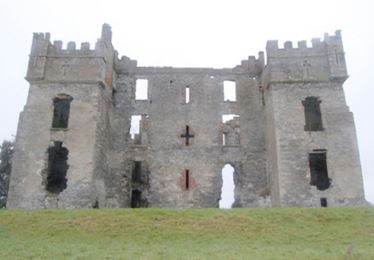
|
| Drumineney | David Wilson was leasing this property from the Ecclesiastical Commissioners estate at the time of Griffiths Valuation in the 1850s, when it was valued at £16. The National Inventory of Architectural Heritage suggests that the current house at this site was developed c.1870 from an earlier building. Robert Wilson was also leasing property in this townland at the same time. A house and extensive farm exist at the site. | |
| Tops (Raphoe) | John Wilson was leasing this property from the Ecclesiastical Commissioners estate at the time of Griffiths Valuation in the 1850s, when it was valued at £18. The National Inventory of Architectural Heritage suggests the current house was built c.1852 possibly on the site of an earlier house. Eliza Wilson was also leasing property at this location in the 1850s. |
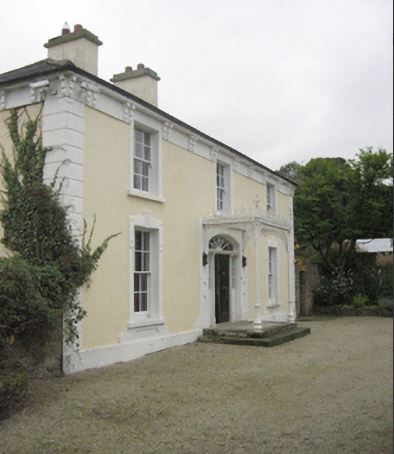
|
| Coolaghy (Raphoe) | William Hamilton was leasing this property from Reverend Lord Edward Chichester's estate at the time of Griffiths Valuation in the 1850s, when it was valued at £20. It appears to have been associated with the Hamilton family for much of the nineteenth and early twentieth centuries. It is still extant and occupied. |
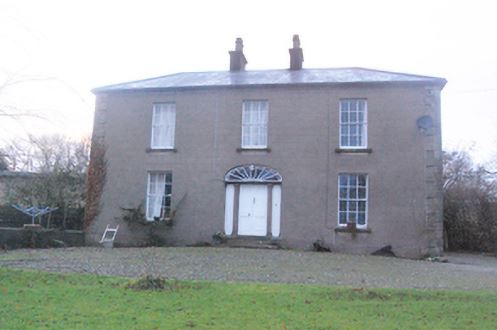
|
| Altaskin Lodge | Robert Rankin was leasing this property from the Ecclesiastical Commissioners estate at the time of Griffiths Valuation in the 1850s, when it was valued at £16. |

